|
Books Should Be Free Loyal Books Free Public Domain Audiobooks & eBook Downloads |
|
|
Books Should Be Free Loyal Books Free Public Domain Audiobooks & eBook Downloads |
|
Satires |
|---|
|
Book type:
Sort by:
View by:
|
By: P. G. Wodehouse (1881-1975) | |
|---|---|
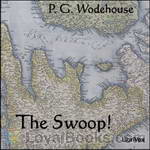 The Swoop!
The Swoop!
The Swoop! tells of the simultaneous invasion of England by several armies — “England was not merely beneath the heel of the invader. It was beneath the heels of nine invaders. There was barely standing-room.” (ch. 1) — and features references to many well-known figures of the day, among them the politician Herbert Gladstone, novelist Edgar Wallace, actor-managers Seymour Hicks and George Edwardes, and boxer Bob Fitzsimmons. | |
By: Pierre Beaumarchais (1732-1799) | |
|---|---|
 Follies of a Day; OR, The Marriage of Figaro (English)
Follies of a Day; OR, The Marriage of Figaro (English)
This is Thomas Holcroft's English translation, obtained by attending Pierre Beaumarchais' French play nine times in Paris during its original official staging in 1784. Beaumarchais' play was the basis for Mozart's 1796 opera, and is a satire about lovers' misdoings and French society. Because of its rebellious themes, presented during the troubling times leading up to the French Revolution, Beaumarchais had a very difficult time getting his play past the censors. Once staged, the play was enormously popular with audiences, including the aristocracy despite their understanding of the underlying themes... | |
By: Richard Steele (1672-1729) | |
|---|---|
 Funeral: or Grief A-La-Mode
Funeral: or Grief A-La-Mode
The Funeral: or, Grief à-la-Mode, a Comedy, was written in the summer of 1701, and given to Christopher Rich, of the Theatre Royal, Drury Lane, in October. Soon afterwards it was acted, and it was published by Jacob Tonson between December 18 and 20, with the date 1702 on the title-page. The music to the songs, by William Croft, appeared between December 16 and 18. [] The play was revived occasionally in most of the years between 1703 and 1734, and from time to time during the following half-century, the last date, apparently, being April 17, 1799... | |
By: Richmal Crompton (1890-1969) | |
|---|---|
 William -- The Fourth
William -- The Fourth
The world’s most confident, most chaos-creating eleven year old boy is at it again in these fourteen glorious and funny 1924 short stories. - Summary by David Wales | |
By: Robert Smythe Hichens (1864-1950) | |
|---|---|
 Green Carnation
Green Carnation
The Green Carnation, first published anonymously in 1894, was a scandalous novel by Robert Hichens whose lead characters are closely based on Oscar Wilde and Lord Alfred Douglas - also known as 'Bosie', whom the author personally knew. It was an instant succès de scandale on both sides of the Atlantic. The book features the characters of 'Esmé Amarinth' (Wilde), and 'Lord Reginald (Reggie) Hastings' (Douglas). The words put in the mouths of the hero and his young friend in the story are mostly gathered from the sayings of their originals... | |
By: Saki (1870-1916) | |
|---|---|
 The Chronicles of Clovis
The Chronicles of Clovis
This is the third collection of short stories by Saki, following on from “Reginald” and “Reginald in Russia”. Although some of the stories have characters that do not appear elsewhere in the collection, many of them are loosely centred round the young Clovis Sangrail (effectively a reincarnation of Reginald). | |
By: Samuel Butler (1835-1902) | |
|---|---|
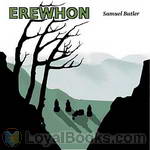 Erewhon
Erewhon
Erewhon, or Over the Range is a novel by Samuel Butler, published anonymously in 1872. The title is also the name of a country, supposedly discovered by the protagonist. In the novel, it is not revealed in which part of the world Erewhon is, but it is clear that it is a fictional country. Butler meant the title to be read as the word Nowhere backwards, even though the letters “h” and “w” are transposed. It is likely that he did this to protect himself from accusations of being unpatriotic, although Erewhon is obviously a satire of Victorian society. | |
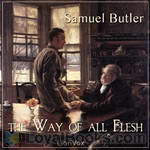 The Way of All Flesh
The Way of All Flesh
The Way of All Flesh (1903) is a semi-autobiographical novel by Samuel Butler which attacks Victorian-era hypocrisy. Written between 1873 and 1884, it traces four generations of the Pontifex family. It represents the diminishment of religious outlook from a Calvinistic approach, which is presented as harsh. Butler dared not publish it during his lifetime, but when it was published it was accepted as part of the general revulsion against Victorianism. | |
By: Samuel Johnson (1709-1784) | |
|---|---|
 Rasselas, Prince of Abyssinia
Rasselas, Prince of Abyssinia
In this enchanting fable (subtitled The Choice of Life), Rasselas and his retinue burrow their way out of the totalitarian paradise of the Happy Valley in search of that triad of eighteenth-century aspiration – life, liberty and happiness.According to that quirky authority, James Boswell, Johnson penned his only work of prose fiction in a handful of days to cover the cost of his mother’s funeral. The stylistic elegance of the book and its wide-ranging philosophical concerns give no hint of haste or superficiality... | |
By: Sinclair Lewis (1885-1951) | |
|---|---|
 Babbitt
Babbitt
| |
By: Stephen Leacock (1869-1944) | |
|---|---|
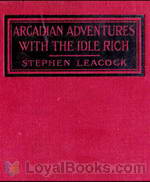 Arcadian Adventures with the Idle Rich
Arcadian Adventures with the Idle Rich
“Arcadian Adventures with the Idle Rich” is a work of humorous fiction by Stephen Leacock first published in 1914. It is the follow-up to his 1912 classic “Sunshine Sketches of a Little Town.” Like that work, it is a sequence of interlocking stories set in one town, but instead of focusing on a small Canadian town in the countryside, it is set in a major American metropolis and its characters are the upper crust of society. Although currently not as well-known as the earlier book, “Arcadian Adventures” was extremely popular in North America at the time of its publication and for a while was considered the greater success... | |
 Moonbeams from the Larger Lunacy
Moonbeams from the Larger Lunacy
Humorous, ironic, and sometimes cynical observations of life in 1915 from Canadian humourist Stephen Leacock. | |
By: Susan Fenimore Cooper (1813-1894) | |
|---|---|
 The Lumley Autograph
The Lumley Autograph
| |
By: Thomas Carlyle (1795-1881) | |
|---|---|
 Sartor Resartus: the life and opinions of Herr Teufelsdröckh
Sartor Resartus: the life and opinions of Herr Teufelsdröckh
| |
 Sartor Resartus, and On Heroes, Hero-Worship, and the Heroic in History
Sartor Resartus, and On Heroes, Hero-Worship, and the Heroic in History
| |
By: Thomas Love Peacock | |
|---|---|
 Nightmare Abbey
Nightmare Abbey
Deep in the fens of the British coast sits the gloomy mansion that goes by the name Nightmare Abbey. It is inhabited by persons of very low opinion of the human race, and in fact they pride themselves in the depths of their detestation. Others of its denizens believe the ultimate exercise and product of the human mind ought to be chaos. Now let the young master of the house get snared by the wiles of a beautiful young lady. And for good measure, toss in another beautiful young lady. Now Scythrop... | |
 Headlong Hall
Headlong Hall
Headlong Hall is the first novel by Thomas Love Peacock, published in 1815 (dated 1816). As in his later novel Crotchet Castle, Peacock assembles a group of eccentrics, each with a single monomaniacal obsession, and derives humor and social satire from their various interactions and conversations. The setting is the country estate of Squire Harry Headlong Ap-Rhaiader, Esq. in Wales. | |
By: Tobias Smollett | |
|---|---|
 The Expedition of Humphry Clinker
The Expedition of Humphry Clinker
The Expedition of Humphry Clinker was the last of the picaresque novels of Tobias Smollett, and is considered by many to be his best and funniest work. Published in London on 17 June 1771, it is an epistolary novel, presented in the form of letters written by six different characters: Matthew Bramble, a Welsh Squire; his sister Tabitha; their niece and nephew, Jery and Lydia Melford; Tabitha’s maid Winifred Jenkins; and Lydia’s suitor, Wilson. Much of the comedy arises from differences in the descriptions of the same events by different participants... | |
 Life and Adventures of Sir Launcelot Greaves
Life and Adventures of Sir Launcelot Greaves
Sir Launcelot Greaves goes around the country with his comic squire, trying to be a knight and perform good deeds. This novel is written in the style of Don Quixote by the author of The Expedition Of Humphry Clinker and other 18th century picaresque novels. Great for those who love wise satires. - Summary by Stav Nisser. | |
By: Various | |
|---|---|
 The Sturdy Oak
The Sturdy Oak
At a certain committee meeting held in the spring of 1916, it was agreed that fourteen leading American authors, known to be extremely generous as well as gifted, should be asked to write a composite novel....Third, to have the novel finished and published serially during the autumn Campaign of 1917.The carrying out of these requirements has not been the childish diversion it may have seemed. Splendid team work, however, has made success possible.Every author represented, every worker on the team, has gratuitously contributed his or her services; and every dollar realized by the serial and book publication of "The Sturdy Oak" will be devoted to the Suffrage Cause... | |
 Curiosities of Street Literature
Curiosities of Street Literature
This is a collection of broadsides from London. Broadsides are short, popular publications, a precursor to today's tabloid journalism. The collection contains sensationalist and sometimes comical stories about criminal conduct, love, the Royal Family, politics, as well as gallows' literature. Gallow's literature were often sold at the execution. As a collection these broadsides are a reminder of how important the printer was at this time -- it is surely no coincidence that the printers are printed at the end of every broadside, while the authors remain anonymous. - Summary by kathrinee | |
By: Virginia Woolf (1882-1941) | |
|---|---|
 The Voyage Out
The Voyage Out
The Voyage Out is the first novel by Virginia Woolf, published in 1915 by Duckworth; and published in the U.S. in 1920 by Doran. One of Woolf's wittiest social satires.Rachel Vinrace embarks for South America on her father's ship and is launched on a course of self-discovery in a kind of modern mythical voyage. The mismatched jumble of passengers provide Woolf with an opportunity to satirize Edwardian life. The novel introduces Clarissa Dalloway, the central character of Woolf's later novel, Mrs... | |
By: Voltaire (1694-1778) | |
|---|---|
 Zadig, or the Book of Fate
Zadig, or the Book of Fate
Zadig, ou La Destinée, (”Zadig, or The Book of Fate”) (1747) is a famous novel written by the French Enlightenment philosopher Voltaire. It tells the story of Zadig, a philosopher in ancient Babylonia. The author does not attempt any historical accuracy, and some of the problems Zadig faces are thinly disguised references to social and political problems of Voltaire’s own day. The book is philosophical in nature, and presents human life as in the hands of a destiny beyond human control. It is a story of religious and metaphysical orthodoxy, both of which Voltaire challenges with his presentation of the moral revolution taking place in Zadig himself... | |
 Zadig or The Book of Fate (Version 2)
Zadig or The Book of Fate (Version 2)
"there is no Evil under the Sun, but some Good proceeds from it:" -- this quote from this novel sums it up. One of Voltaire's most celebrated works, Zagig follows the plight of a young man, Zadig, as he embarks on matrimony. This tale is somewhat philosophical, suggesting that no matter how we act, we are confronted by bigotry, injustice and betrayal. Although set in Babylon, there is no attempt at historical accuracy. | |
By: W. S. Gilbert (1836-1911) | |
|---|---|
 Pinafore Picture Book: The Story Of H.M.S. Pinafore (Version 2)
Pinafore Picture Book: The Story Of H.M.S. Pinafore (Version 2)
Pinafore’s sublimely silly story is made even sillier by this 1908 story version of the 1878 Gilbert and Sullivan operetta. Gilbert, the author of the operetta’s lyrics, writes this version of the story with his tongue planted firmly in his cheek. Most adults and children will find this version vastly amusing. - Summary by David Wales | |
By: Ward Moore (1903-1978) | |
|---|---|
 Greener Than You Think
Greener Than You Think
Do remember reading a panic-mongering news story a while back about genetically engineered “Frankengrass” “escaping” from the golf course where it had been planted? That news story was foreshadowed decades previously in the form of prophetic fiction wherein a pushy salesman, a cash-strapped scientist, and a clump of crabgrass accidentally merge forces with apocalyptic consequences. A triple-genre combo of science fiction, horror, and satire, Greener Than You Think is a forgotten classic that resonates beautifully with modern times. This is a faithful reading of a 1947 first edition text. | |
By: Washington Irving (1783-1859) | |
|---|---|
 Knickerbocker's History of New York, Vol. 1
Knickerbocker's History of New York, Vol. 1
Washington Irving, an author, biographer, historian, and diplomat, completed his first major work, a satire of contemporary local history and politics entitled A History of New-York from the Beginning of the World to the End of the Dutch Dynasty, by Diedrich Knickerbocker in 1809. Prior to its publication, Irving started a promotional hoax (not unlike some modern-day publicity stunts?) by placing fake missing persons advertisements in local newspapers asking for help in locating Diedrich Knickerbocker... | |
 Letters of Jonathan Oldstyle, Gent.
Letters of Jonathan Oldstyle, Gent.
The Letters of Jonathan Oldstyle, Gent. (1824) is a compilation of eight humorous and observational letters written by American writer, Washington Irving, under the pseudonym, Jonathan Oldstyle. These eight letters and one additional were first published as a series of "Letters to the Editor" of the New York paper, The Morning Chronicle, between 1802 and 1803. In them Oldstyle skewered the local New York social scene on the topics of etiquette, marriage, fashion, and other particulars of human interaction... | |
By: William Blake (1757-1827) | |
|---|---|
 Marriage of Heaven and Hell
Marriage of Heaven and Hell
The work was composed between 1790 and 1793, in the period of radical foment and political conflict immediately after the French Revolution. The title is an ironic reference to Emanuel Swedenborg's theological work Heaven and Hell published in Latin 33 years earlier. Swedenborg is directly cited and criticized by Blake several places in the Marriage. Though Blake was influenced by his grand and mystical cosmic conception, Swedenborg's conventional moral structures and his Manichean view of good... | |
By: William Dean Howells (1837-1920) | |
|---|---|
 Indian Summer
Indian Summer
In his novel Indian Summer, William Dean Howells presents a mellow but realistic story that has the complete feel of that delightful time of the year, although the plot actually spans several seasons. The Indian summer aspect applies to a sophisticated gentleman, Theodore Colville, who has just entered his middle years as he returns to a scene, Florence, Italy, that played an important part in his early manhood. It was here twenty years earlier that he first fell in love, seemingly successfully until a sudden and harsh rejection... | |
By: William Hurrell Mallock (1849-1923) | |
|---|---|
 New Republic; or Culture, Faith and Philosophy in an English Country House
New Republic; or Culture, Faith and Philosophy in an English Country House
A group of upper class men and women gather together in an English country house to discuss their ideas for a utopia . The novel is a satire mocking most of the important figures at Oxford University at the time of publication, with regards to aestheticism and Hellenism. Some of the famous characters that are depicted are Violet Fane/Lady Mary Montgomery Currie , Thomas Huxley , William Money Hardinge , Thomas Carlyle , and Walter Pater . The latter is of particular interest, as his characterisation in this novel helped ruin his reputation as well as his career at Oxford University... | |
By: William Makepeace Thackeray (1811-1863) | |
|---|---|
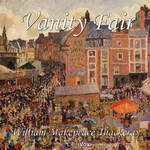 Vanity Fair
Vanity Fair
If you've enjoyed watching the 1998 BBC television miniseries, you'd probably want to renew your acquaintance with William Makepeace Thackeray's 1847 novel, Vanity Fair. However, if you're unfamiliar with what has been dubbed one of the Best 100 Books in English Literature, you certainly have a treat ahead. Miss Pinkerton's Academy in Chiswick Mall in London is where young ladies with ambitions of making a good marriage are sent by their socially aspiring middleclass parents. Two young ladies, Amelia Sedley and Rebecca (Becky) Sharpe are on their way home after completing their term at Miss Pinkerton's... | |